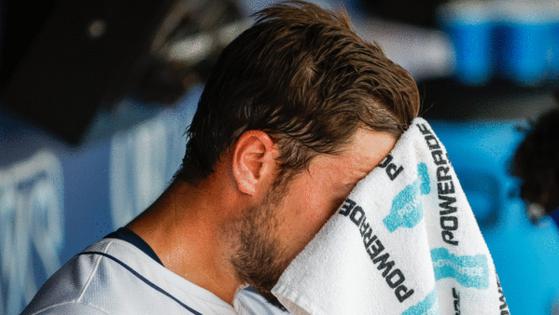John Romano: A bad season for the Rays? Hardly. It was historically disappointing.
Published in Baseball
TAMPA, Fla. — These days, you can measure just about anything on a baseball diamond.
Want to know the spin rate on a slider? No problem. Exit velocity of a batted ball? It’s at your fingertips. Outfield catch probability, launch angle of a swing, movement on a breaking pitch? They’re all calculated beyond anything we might have imagined 20 years ago.
You want to know what can’t be measured?
Disappointment.
There is no video, algebraic equation or algorithm to tell you precisely how upsetting a lost season has been. For that, you trust your gut. Your heart. Your memories.
And today, they should be telling you this is one of the most disappointing seasons the Rays have ever endured.
Sure, we’ve lived through plenty of seasons with worse records. Anything pre-2008, for example. But the disappointment you feel in the fall of 2025 must be weighed against the expectations you carried in the spring of ’25.
I don’t think anybody would have bet the house that the Rays were a World Series contender on opening day, but there was hope of something exciting. Maybe 90 wins. Certainly a postseason spot.
The Rays had made rare forays into the free-agent market to fix problems at catcher and shortstop. They had a healthy, crowded starting rotation with a bunch of young arms expected to have breakout seasons. They had promise.
And then … thud!
A spring injury to Shane McClanahan that ended up being more costly than imagined. An oblique pull for Josh Lowe five innings into the season. A week later, Jonny DeLuca went down. For two months, very little seemed to go right.
Finally, in mid-May, the roster started to click. The Rays were the best team in baseball for six weeks, moving from fourth place in the American League East to a half-game off the division lead with a 5 1/2 game cushion in the wild-card standings at the end of June.
And then … splat!
The Rays went from 11 games over .500 to four games under heading into Tuesday night in Baltimore. No pennant race, no playoffs, no glory. Just a hollow feeling with few satisfying answers.
What went wrong?
The answers are both obvious and mystifying. After averaging 5.6 runs per game in June, they fell to 3.9 in July. That’s a 30% dropoff overnight. The pitching staff had a 4.43 ERA in July, which was the worst month of the year. The bullpen had five blown saves in an eight-game span.
The Rays fell into a rut and were unable to pull themselves back out. Players with a history of accomplishment were suddenly unreliable. No matter what they tried, the Rays could not consistently come through in the late innings. In one stretch, they were 8-16 in one-run games.
Can you blame the players? Yes. Can you blame manager Kevin Cash? Yes. Can you blame baseball operations president Erik Neander? Yes. Can you blame fate? If you’re so inclined.
The bottom line is this team underperformed. Not just individually, but collectively. They have lost far more games than they should have, and that’s not a subjective opinion.
One of the simplest analytical tools to understand is run differential. If you outscore your opponents over the course of a season, you’re likely to have a winning record. You can look at run differential as an easy way to determine whether a team won or lost more than its fair share of games.
The Rays went into Tuesday night’s game in Baltimore with a run differential of plus-49. Of all the teams with a similar run differential in baseball’s expansion era — and there have been 71 teams with a run differential between 45-55 since 1961 — 96% of them had winning records.
In other words, the Rays have defied incredible odds to be this bad. A half-dozen games remain so it’s possible the numbers change, but it’s been nearly 20 years since a team had a losing record with such a positive run differential.
That is the very definition of disappointing.
Now, there have been a few other seasons that have left Rays fans with a similarly empty feeling. After winning 97 games and reaching the World Series in 2008, the Rays stumbled to an 84-78 finish in 2009. Last year was a letdown, too, but that was sort of expected with Wander Franco in limbo and McClanahan, Drew Rasmussen and Shane Baz in various stages of recovery from Tommy John surgery.
This season was supposed to be different. There was enough talent on the roster to contend and, while there have been some injuries, they were not devastating enough to explain a 29-44 record from June 29 to Sept. 22.
There is no other way to explain what happened in 2025.
It was horribly disappointing.
____
©2025 Tampa Bay Times. Visit tampabay.com. Distributed by Tribune Content Agency, LLC.







Comments